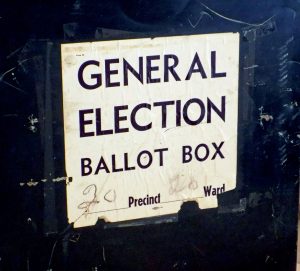26 May 2017
How do you vote if you have sight loss?
Unless you are blind, partially sighted, or know someone who is, it’s possible you’ve never wondered how blind people vote. But of course, just like sighted voters, blind and visually impaired people have a right to vote independently, and in secret. For a process so entrenched in the written medium, we find out how polling stations can achieve this.

It’s the duty of local authorities to ensure that polling stations are accessible, so that everyone – regardless of their access needs – can exercise their democratic right to vote. Frustratingly however, the RNIB found that, in the 2015 general election, an alarming 50% of people with sight loss could not vote in secrecy, even though it’s a legal right.
So how can blind and visually impaired people vote?
The RNIB informs us that for partially sighted voters, polling station officials should display a large print version of the ballot form at every polling station. Staff must also provide a large print ballot form to take into the booth, for the voter to read. However, when the visually impaired person wants to cast their vote, they must use the standard print ballot paper.
But what happens when someone can’t read large print?
For people who cannot complete the standard ballot paper, polling stations must offer a tactile voting device. It sticks to the standard print ballot paper and provides a touchable guide to help people put their cross in the right box. The device has flaps with Braille on, and a raised number which identifies which box is which. The voter then lifts the flap and marks their cross in the box, then remove the tactile device, and posts the ballot in the box.
Independently and in private?
Although the system in the UK goes a long way to providing people with sight loss with the opportunity to vote independently and in private, there are clearly potential barriers. For example, if someone has no vision at all, how can they independently find out about the candidates? Although they can ask a companion or polling station officials to read the ballot paper out aloud, this may not be considered ‘independent’ voting by many people.
Voting in the USA…
The voting system in the United States on the other hand seems to be one step head. A new process allows blind and partially sighted voters to use an accessible voting machine. Using a special keypad and headphones, voters can listen to candidate information in audio format. Both the volume and speed of speech is variable, making it easy to personalise, depending on the needs of each individual voter. After listening to the candidate information, people can cast their vote using the keypad. This new system in the USA is very exciting – and represents a significant step towards making democracy more accessible. We really hope to see something similar in the UK soon.
Campaign to change!
A2i supports the RNIB’s campaign to increase accessibility for voters with sight loss. Please join us by signing up to ask your local candidates to support accessible voting!